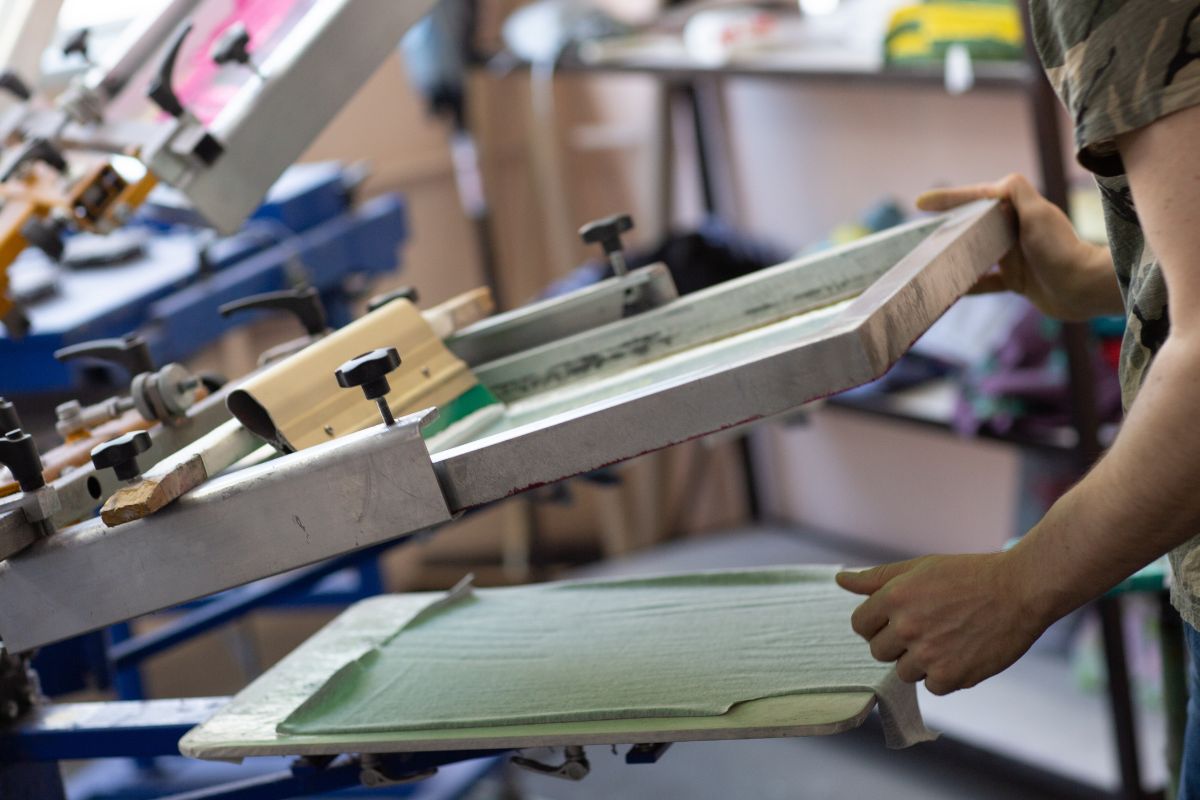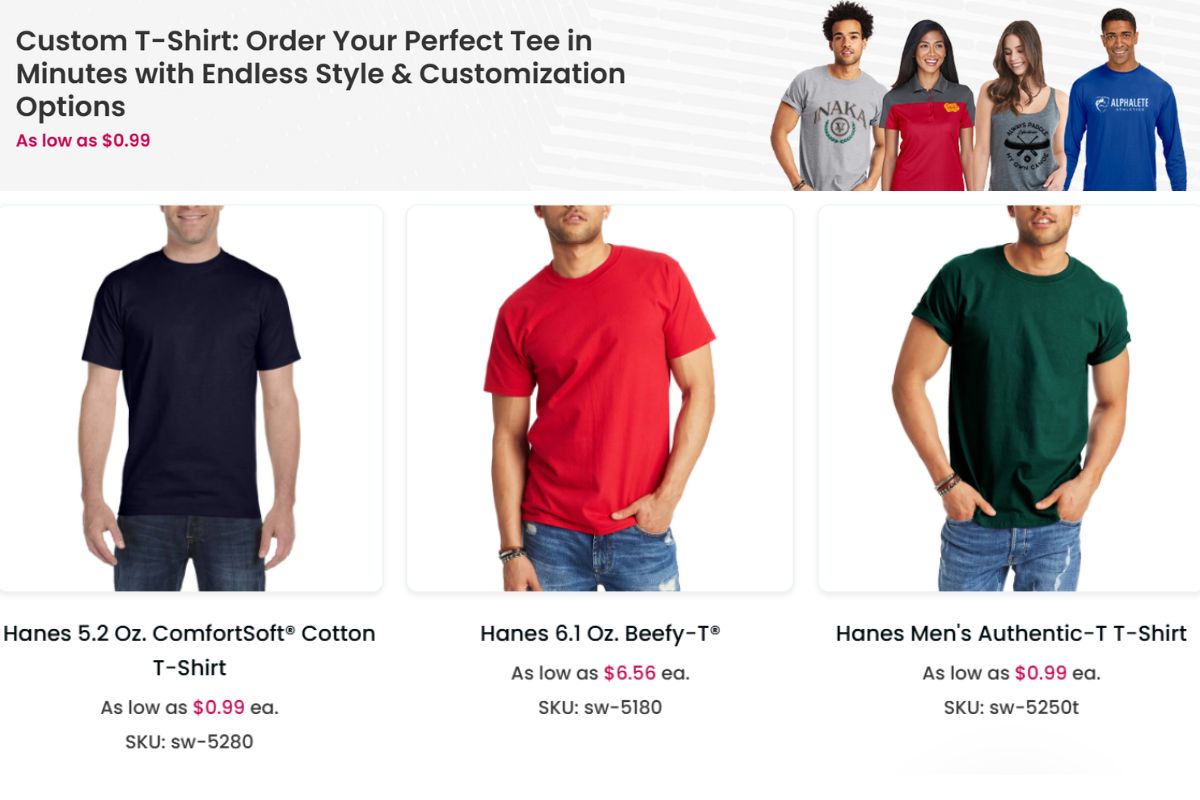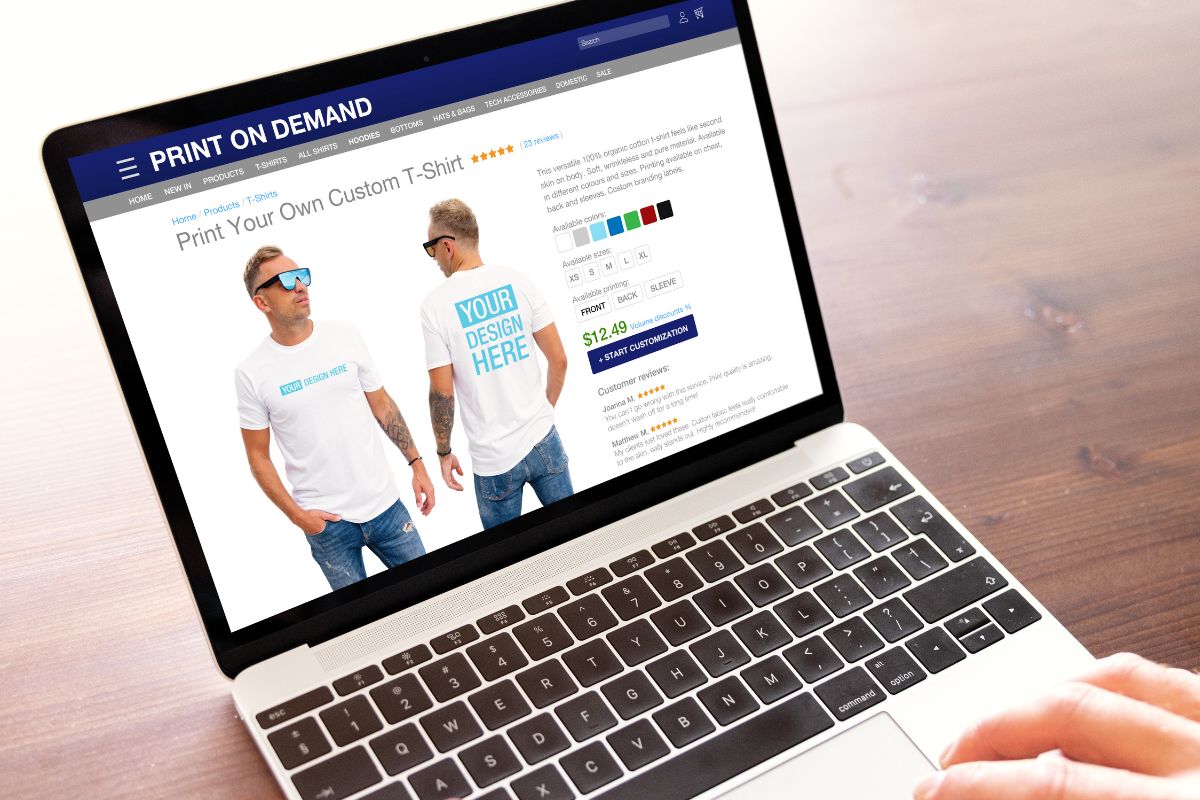Starting a print-on-demand business can be an exciting opportunity for anyone looking to enter the world of e-commerce.
You can create custom products without worrying about inventory or large upfront costs, making it a low-risk way to explore your creativity.
This model allows you to design and sell items only after a customer places an order, which means you can focus on marketing and design rather than storage and logistics.
Table of Contents for Your Print-on-Demand Business Guide
- Understanding Print on Demand
- Planning Your Business
- Creating Your Brand
- Designing Your Products
- Building an Online Presence
- Integrations and Technologies
- Managing Your Inventory and Fulfillment
- Setting Pricing and Handling Finances
- Marketing and Customer Acquisition
- Customer Service and Satisfaction
- Expanding Your Business
- Legal and Ethical Considerations
- Frequently Asked Questions
- What are the initial steps to starting a print on demand business on a platform like Etsy?
- What are some successful strategies for running a print on demand business?
- Do you need a business license to start selling with a print on demand service?
- How much capital is required to launch a print on demand business effectively?
- What are examples of profitable print on demand niches?
- Can you generate a good income from a print on demand business in the current market?
To begin, you will need to choose a niche that interests you and aligns with market trends.
This selection plays a crucial role in your success, as it helps you target the right audience.
Next, you’ll need to pick a reliable print-on-demand service to handle production and shipping. Many platforms offer these services, so finding one that suits your needs is essential.
Marketing your products effectively will also impact your business’s growth.
Utilizing social media and online marketplaces can help you reach a larger audience. With the right approach and tools, your print-on-demand business can thrive in today’s competitive landscape.
Understanding Print on Demand
Print on demand (POD) is a business model that allows you to sell custom products without holding any inventory. This system is ideal for those starting in eCommerce, as it simplifies the process of product creation and fulfillment.
Defining Print on Demand
Print on demand is a service that allows businesses to print items, like clothing and accessories, as orders come in. You design the products, but they are printed and shipped by a third-party supplier. This removes the need for large upfront costs, as you don’t pay for items until they are sold.
POD integrates with eCommerce platforms, meaning you can easily set up an online store. Popular items for POD include t-shirts, mugs, posters, and phone cases. With so many options, you can create unique designs that cater to various customer interests.
Advantages of a Print on Demand Business Model
There are several advantages to starting a print on demand business.
First, you don’t need to invest heavily in inventory. This means less financial risk and lower startup costs. You can focus your investment on marketing your designs rather than buying products upfront.
Another benefit is the flexibility to test different designs and niches. You can quickly adjust your offerings based on what sells well without being stuck with unsold stock.
Additionally, POD allows for seamless integration with various eCommerce platforms. This means that once you set up your store, the POD provider handles the printing and shipping. This saves you time and effort, letting you focus on growing your business.
Planning Your Business
| Step | Description | Best Practices |
|---|---|---|
| 1. Choose a Niche | Select a specific audience or theme for your t-shirts (e.g., fitness, anime, pets). | Research trending niches using Google Trends, Etsy, and social media. |
| 2. Select a POD Platform | Choose a print-on-demand service like Printful, Printify, or Teespring. | Compare product quality, shipping times, and integration with your store. |
| 3. Create Unique Designs | Design your t-shirts using tools like Canva, Photoshop, or Illustrator. | Use high-resolution images (300 DPI) and transparent backgrounds (PNG format). |
| 4. Set Up an Online Store | Sell on Shopify, Etsy, WooCommerce, or Amazon Merch. | Optimize product titles, descriptions, and images for SEO. |
| 5. Integrate POD Service | Link your store to the chosen POD platform for automatic order fulfillment. | Test the integration with sample orders before launching. |
| 6. Price Your Products | Set competitive pricing that includes production costs, shipping, and profit margins. | Offer discounts for bulk purchases and first-time buyers. |
| 7. Launch & Market Your Brand | Promote your store using social media, email marketing, and paid ads. | Use influencer marketing, TikTok videos, and Instagram Reels to attract buyers. |
| 8. Optimize for SEO | Use keywords like “custom t-shirts,” “funny graphic tees,” and “personalized gifts.” | Write detailed product descriptions and blog content to drive organic traffic. |
| 9. Test & Improve | Monitor analytics, customer feedback, and sales performance. | Adjust pricing, designs, and marketing strategies based on data. |
| 10. Scale Your Business | Expand product offerings (hoodies, mugs, phone cases) and enter new markets. | Automate processes and consider running Facebook and Google ads. |
To start a successful print-on-demand business, careful planning is essential.
This includes identifying your niche, conducting thorough market research, and setting clear business goals. Each of these elements will help you create a solid foundation for your venture.
Identifying Your Niche
Finding your niche is key to standing out in the print-on-demand market.
Think about your interests, hobbies, and what you are passionate about. This passion will help you stay motivated.
Use Google Trends to explore what people are searching for. Look for areas with high interest but low competition. Some popular niches include:
- Fitness and wellness
- Pets & animals
- Pop culture
Choose a niche that resonates with your target audience. This connection can lead to better engagement and sales.
Market Research and Competitor Analysis
Market research helps you understand your target audience and their preferences.
Identify who your potential customers are and what they want.
Study your competitors. Look at their products, pricing, and marketing strategies. Use tools like:
- Social media
- Business reviews
- E-commerce platforms
Analyzing competitors allows you to find gaps in the market. This insight can help you improve your offerings and attract more customers.
Setting Business Goals
Set specific, measurable, achievable, relevant, and time-bound (SMART) goals for your print-on-demand business. These goals will guide your efforts and keep you focused.
Consider these areas for goal setting:
- Sales targets: Decide how much you want to earn in the first year.
- Customer growth: Set goals for how many customers you aim to reach.
- Brand recognition: Establish milestones for building your brand identity.
Regularly review your goals to ensure you stay on track. Adjusting them based on performance will help you grow and succeed over time.
Creating Your Brand
Building a strong brand is crucial for your print-on-demand business. It helps you connect with customers and stand out in a crowded marketplace.
Focus on developing a unique identity, positioning your brand effectively, and maintaining consistency across all platforms.
Developing Your Brand Identity
Your brand identity includes your logo, colors, and overall style.
Start by creating a memorable logo that reflects your unique designs. Choose colors that appeal to your target audience, as colors can evoke different emotions.
Think about the message you want to communicate. What values does your brand represent? This will shape how customers view you.
Consider how your designs can showcase this identity. For instance, if your designs focus on eco-friendliness, ensure your branding reflects that commitment.
Brand Positioning in the Marketplace
Positioning your brand involves finding your unique place in the market.
Research your competition to see how they brand themselves. Identify gaps that your business could fill with original designs or a distinct message.
Define your target audience. Who are they? What do they want? This knowledge will guide your design and marketing decisions.
Engage with potential customers through social media and surveys to understand their needs. This proactive approach will help you create a brand that resonates with your audience.
Importance of Consistent Branding
Consistency in branding helps build trust and recognition.
Use the same logo, colors, and style across all platforms, including your website, social media, and packaging. This makes your brand easily recognizable.
Apply consistent messaging as well. Whether you are promoting a new product or sharing a post, keep your voice and tone the same. This strengthens your reputation over time and fosters customer loyalty.
Remember, strong branding can set you apart in the print-on-demand market. It influences how customers perceive you and encourages repeat business.
Designing Your Products
| Step | Description | Best Practices |
|---|---|---|
| 1. Choose a Design Style | Decide on the type of designs (minimalist, bold graphics, typography, etc.). | Research trends in your niche and analyze best-selling designs. |
| 2. Use High-Quality Graphics | Ensure designs are high-resolution (300 DPI) and properly formatted. | Save files as PNG with a transparent background for easy printing. |
| 3. Select the Right Colors | Choose colors that stand out and complement the shirt fabric. | Avoid too many colors in screen printing to reduce production costs. |
| 4. Optimize for Print Size | Ensure designs fit well on different shirt sizes (S-XXL). | Use POD templates to adjust dimensions and placement. |
| 5. Add Unique Typography | Use stylish, readable fonts for text-based designs. | Avoid overly decorative fonts that may be hard to read. |
| 6. Test Print Your Design | Order samples to check print quality before selling. | Adjust colors and sharpness if needed based on test results. |
| 7. Design for Multiple Products | Adapt designs for hoodies, mugs, phone cases, and posters. | Resize and reposition graphics to fit different product dimensions. |
| 8. Consider Customization Options | Allow customers to personalize text or colors. | Offer name, date, or monogram customization to boost sales. |
| 9. Follow Copyright & Trademark Laws | Ensure your designs do not violate any copyrights or trademarks. | Use tools like the USPTO database or TM search tools before selling. |
| 10. Keep Your Design Portfolio Fresh | Regularly update designs based on seasons, trends, and holidays. | Monitor market demand and create limited-edition collections. |
Creating appealing product designs is essential for your print-on-demand business. It combines your creativity with an understanding of your target market.
Focusing on unique designs and quality materials helps attract customers and drive sales.
The Role of Creativity and Designs
When designing your products, creativity is key. Your designs should reflect current trends and appeal to your target audience.
Think about using bold colors, unique graphics, or catchy sayings that resonate with your customers.
Consider focusing on popular items like t-shirts and hoodies. These allow for a range of creative designs. You can use software like Adobe Illustrator or Canva to create striking visuals.
Tip: Regularly conduct market research to see what styles are trending. This helps you stay ahead and keeps your designs fresh.
Collaborating with Designers and Artists
If you’re not confident in your design skills, collaborating with designers or artists is a smart move.
Look for talent on platforms like Fiverr or Upwork. You can find freelance artists who specialize in apparel graphics.
Make sure to communicate your vision clearly. Share examples of designs you like to guide them. Good collaboration can lead to unique designs that stand out.
Benefits of Collaboration:
- Access to professional skills
- Fresh perspectives
- High-quality designs
Understanding Print Quality and Materials
Choosing the right materials is vital for ensuring print quality. Different fabrics have different properties.
Cotton, for example, is soft and breathable, making it ideal for t-shirts. Polyester blends can provide durability and vibrant color.
Consult with your print-on-demand service to understand the material options. Ensure the designs are compatible with the printing methods you will use.
Key Considerations:
- Print Techniques: Direct-to-garment (DTG) often allows for detailed images.
- Longevity: Choose materials that withstand wear and tear.
This knowledge will help you create products that please your customers and stand the test of time.
Building an Online Presence

Creating a strong online presence is essential for a successful print-on-demand business.
This includes selecting a suitable eCommerce platform, setting up your online store effectively, and ensuring your product photos attract customers.
Choosing the Right Ecommerce Platform
Your choice of eCommerce platform is critical. Popular options include Shopify, Etsy, Amazon, and eBay.
- Shopify is great for those looking for easy-to-use tools and integrations. It allows for customization and scalability.
- Etsy is ideal for handmade and unique items, attracting a creative audience.
- Amazon offers a vast marketplace but can have stiff competition.
- eBay might be suitable if you want to auction your products or reach a diverse audience.
Consider your target market, budget, and business goals when making your decision.
Setting Up Your Online Store
Once you select a platform, it’s time to set up your online store.
Start with a compelling business name and a clear brand identity.
Ensure your website is user-friendly. Include sections like
- Home
- Shop
- About Us
- Contact
Organize your products into categories for easy navigation.
Integrate payment options like PayPal, credit cards, and others.
Good customer service features, like a chat option, can enhance user experience.
A smooth process from browsing to checkout is key to keeping customers happy.
Importance of High-Quality Product Photos
High-quality product photos can significantly affect your sales. Customers want to see what they are buying clearly.
Here are some tips:
- Use natural lighting for clear images.
- Display products from multiple angles.
- Include close-ups to show detail.
- Lifestyle images can help customers envision the product in use.
Consider investing in a good camera or hiring a photographer if necessary. Remember, a picture is worth a thousand words. Good photos can set your products apart from the competition.
Integrations and Technologies
| Category | Best Tools & Platforms | Benefits |
|---|---|---|
| E-Commerce Platforms | Shopify, WooCommerce, Etsy, BigCommerce | Easy store setup, built-in payment gateways, customizable storefronts |
| Print-on-Demand Providers | Printful, Printify, SPOD, Teespring, AOP+ | Automated order fulfillment, global shipping, various product options |
| Design Software | Adobe Photoshop, Canva, CorelDRAW, GIMP | Create high-quality, professional designs |
| Mockup Generators | Placeit, Smartmockups, Printful Mockup Tool | Generate realistic product previews for marketing |
| Payment Gateways | PayPal, Stripe, Square, Razorpay | Secure online payments, multiple currency support |
| SEO & Analytics | Google Analytics, Ahrefs, SEMrush, Ubersuggest | Optimize product listings, track website traffic and performance |
| Email Marketing | Mailchimp, Klaviyo, ConvertKit, Omnisend | Automate email campaigns, engage customers with promotions |
| Social Media Marketing | Facebook Ads, Instagram Ads, TikTok Ads, Pinterest | Target specific audiences, increase brand awareness |
| Chatbots & Customer Support | Zendesk, Tidio, Chatfuel, LiveChat | Automate responses, provide instant customer support |
| Automation & Order Management | Zapier, Order Desk, Printful API | Automate tasks, sync orders between platforms |
In this section, you’ll explore essential print-on-demand services and how to integrate them with popular ecommerce marketplaces. Understanding these tools can help streamline your business operations and improve your customer experience.
Print-on-Demand Services and Providers
Selecting the right print-on-demand provider is essential for your business. Popular options include Printify and Printful.
Both platforms offer easy integration with ecommerce sites, allowing you to create and list products quickly.
- Printify: Offers a wide variety of products, including clothing, mugs, and phone cases. They have multiple printing partners, which helps with shipping times and costs.
- Printful: Known for high-quality prints and more than 300 product options. They provide branded packing slips, enhancing your brand’s professional look.
When choosing a provider, consider factors like product range, quality, shipping speed, and pricing. Make sure to research each option to find what best fits your needs.
Integrating with Ecommerce Marketplaces
You can sell your print-on-demand products through different ecommerce marketplaces. Shopify is one of the most user-friendly platforms for integration. It allows you to sync your print-on-demand services easily.
Here are key steps to integrate:
- Choose your provider: Select from Printify or Printful based on your research.
- Set up your website: Use Shopify to create your online store.
- Connect your print-on-demand service: Follow the integration guides provided by your chosen service.
This often involves installing an app in Shopify.
Using ecommerce marketplaces not only expands your reach but also simplifies order management. Ensure you regularly check for updates or changes in the integration process to keep your business running smoothly.
Managing Your Inventory and Fulfillment

Efficient inventory and fulfillment are crucial for running a successful print-on-demand business. You need to ensure timely deliveries while maintaining a well-organized inventory system. Below are key strategies to streamline these processes.
Streamlining Order Fulfillment
To keep your customers happy, your order fulfillment process must be efficient.
Choose a reliable print-on-demand partner such as Printful or Printify. This helps you focus on marketing while they handle the printing and shipping.
Set clear shipping options based on your target audience’s preferences. Offer choices like standard, expedited, and international shipping. This flexibility can improve customer satisfaction.
Automate your order processing to reduce errors. By integrating your e-commerce platform with your fulfillment partner, orders can be processed automatically, saving time and minimizing mistakes.
Inventory Management Strategies
Effective inventory management is vital to avoid overstocking or running out of popular items. Start by tracking your sales to identify trends. This data helps you understand which products sell quickly.
Utilize low-stock alerts to manage your inventory. These alerts can notify you when products hit a certain threshold, prompting you to reorder.
Consider using a cloud-based inventory management software. This can offer real-time updates, making it easier to monitor stock levels. It also helps in coordinating your supply chain more effectively.
Lastly, analyze your suppliers to ensure they can meet your needs. Having reliable suppliers will help you maintain a steady stock without delays.
Setting Pricing and Handling Finances
| Aspect | Key Considerations | Best Practices |
|---|---|---|
| Cost Calculation | Factor in base product cost, printing, shipping, and platform fees. | Use a pricing formula: (Cost + Profit Margin) + Shipping + Taxes. |
| Profit Margin | Set a margin that balances competitiveness and profitability. | Aim for 30-50% profit per item while staying market competitive. |
| Pricing Strategies | Choose between cost-based, value-based, and competitor-based pricing. | Analyze competitors and offer bundle discounts or premium pricing for exclusivity. |
| Currency & Tax Management | Account for currency exchange rates and sales taxes. | Use tools like Avalara or TaxJar for automated tax calculations. |
| Payment Gateways | Choose secure payment methods like PayPal, Stripe, or Square. | Ensure multiple payment options for global customers. |
| Handling Refunds & Returns | Define clear policies for defective products or misprints. | Offer store credit or reprints instead of full refunds where possible. |
| Bookkeeping & Accounting | Track sales, expenses, and profits accurately. | Use accounting tools like QuickBooks, Wave, or Xero for financial tracking. |
| Managing Cash Flow | Plan for upfront marketing expenses and delayed payouts. | Keep a cash reserve to cover ad costs and supplier payments. |
| Discounts & Promotions | Offer time-limited deals, free shipping, and bundle pricing. | Use urgency tactics like “limited-time offer” to drive sales. |
| Scaling Revenue | Diversify income streams with upsells, new product lines, and partnerships. | Track sales performance and reinvest in high-performing designs. |
When starting a print-on-demand business, pricing and financial management are crucial. By understanding how to calculate your costs and profit margins, you can set effective prices that ensure profitability.
Calculating Profit Margins and Costs
To determine your profit margins, start by listing all the costs involved in producing your products. This includes:
- Production Costs: What you pay to manufacture each item.
- Shipping Costs: Expenses related to delivering your products to customers.
- Platform Fees: Any commissions or fees from selling platforms.
Once you have these numbers, calculate your total costs. For example:
- Production Cost: $10
- Shipping Cost: $5
- Platform Fee: $3
Total Cost = $10 + $5 + $3 = $18
Now set a selling price. Suppose you decide to sell the item for $30:
Profit = Selling Price – Total Cost
Profit = $30 – $18 = $12
For profit margins, use this formula:
Profit Margin = (Profit / Selling Price) x 100
Profit Margin = ($12 / $30) x 100 = 40%
Pricing Strategies for Your Products
Choosing a good pricing strategy is essential. Common strategies include:
- Cost-Plus Pricing: You add a set percentage to your total costs. This is straightforward and ensures profits.
- Competitive Pricing: Analyze your competitors’ prices and set yours accordingly. This helps you stay competitive in the market.
- Value-Based Pricing: Price your products based on the perceived value to customers. This can lead to higher profits if your products offer unique benefits.
When setting prices, keep your target audience in mind. Consider what they would be willing to pay. You should also account for any discounts or promotions.
A clear pricing plan can help you manage finances better and avoid losses. Regularly review your pricing to stay aligned with market changes and demands.
Marketing and Customer Acquisition

Successful marketing is crucial for your print-on-demand business. You need a clear strategy to reach your target market effectively. Focus on building brand awareness through social media, and enhance your online visibility with SEO and content marketing.
Developing a Marketing Strategy
Start by defining your target audience. Identify who would be interested in your products. Use market research to understand their preferences, buying habits, and demographics.
Next, outline your marketing efforts. Set clear objectives, such as increasing website traffic or boosting sales. Create a budget to determine how much you can spend on advertising and promotions.
Regularly evaluate your marketing strategy. Use analytics to track your efforts and adjust based on what works best. Staying flexible can lead to better results.
Leveraging Social Media for Brand Awareness
Social media is a powerful tool for reaching customers. Identify platforms where your target market spends their time, like Instagram, Facebook, or TikTok.
Create engaging content that showcases your products. Use visuals, such as photos and videos. Consider running promotions or contests to encourage interaction and grow your following.
Engage with your audience by responding to comments and messages. Use social listening to find out what customers are saying about your brand. This helps you build a strong relationship with them.
Implementing SEO and Content Marketing
SEO improves your website visibility in search engines. Start with keyword research to find terms your potential customers use. Use these keywords in your product descriptions, blog posts, and web pages.
Content marketing helps position you as an expert. Share valuable articles, guides, or tips related to your niche. This can attract more visitors to your site and keep them engaged.
Remember to keep your content relevant and updated. Use analytics to see which topics resonate most. Adjust your content strategy accordingly to improve your reach and customer acquisition.
Customer Service and Satisfaction
| Aspect | Key Considerations | Best Practices |
|---|---|---|
| Clear Return & Refund Policy | Set guidelines for misprints, damages, or lost shipments. | Offer store credit or replacements instead of full refunds. |
| Fast Response Time | Address customer inquiries within 24 hours. | Use chatbots (Tidio, Zendesk) for instant replies and FAQs. |
| Multiple Support Channels | Offer support via email, live chat, social media, and phone. | Keep responses consistent and professional across platforms. |
| Order Tracking & Updates | Provide real-time order tracking to customers. | Use automated email/SMS notifications for updates. |
| Handling Negative Reviews | Respond politely, acknowledge the issue, and offer a solution. | Never delete negative reviews—resolve them professionally. |
| Personalized Customer Experience | Address customers by name and offer custom recommendations. | Send thank-you emails and loyalty discounts. |
| Quality Control | Ensure POD partners maintain high-quality prints and materials. | Order samples before launching to check product quality. |
| Loyalty & Referral Programs | Reward repeat customers with discounts or free shipping. | Encourage referrals with incentives for new buyers. |
| After-Sales Support | Follow up with customers for feedback and satisfaction. | Offer guides on product care and styling tips. |
| Managing High Order Volumes | Plan for peak seasons and high sales periods. | Use automated tools to handle bulk customer queries. |
Providing excellent customer service is key to retaining customers and building your reputation. Focusing on creating a positive customer experience and managing your service efficiently can lead to higher satisfaction rates.
Creating a Positive Customer Experience
To create a positive experience, communication is essential. Make sure your customers can easily contact you. Provide several options like email, chat, and phone support. Quick responses show you care about their needs.
Offer clear information about your products and services. Use simple language in your FAQs and product descriptions. This helps customers make informed decisions.
Consider sending follow-up emails after purchases. Ask for feedback and thank them for their business. This not only builds loyalty but also shows you value their opinion.
Tips:
- Be friendly and professional in your communication.
- Use personalized messages to connect better with customers.
Managing Customer Service Efficiently
Managing customer service requires organization and timely responses. Set specific goals for response times. Aim to reply within 24 hours at most.
Use customer service tools to track inquiries and issues. Platforms like Zendesk or Freshdesk can help you manage requests smoothly.
Train your team on customer service best practices. Ensure they understand your products well and can resolve issues efficiently.
Important Elements:
- Set clear expectations for customers on delivery times and return policies.
- Always follow up on unresolved issues to show customers you care.
By focusing on these areas, you can foster satisfaction and build a strong reputation for your print-on-demand business.
Expanding Your Business

Once your print-on-demand business is off the ground, you might want to think about ways to grow. This involves scaling your operations and diversifying your product catalog. Both strategies can help increase your revenue and reach more customers.
Scaling Your Operations
To scale your operations effectively, you need to optimize the processes that keep your business running. Start by examining your current workflows. Look for any bottlenecks that slow down production or shipping.
Consider automating repetitive tasks. Tools like order management systems can help you manage larger volumes of sales without overwhelming your team.
Additionally, hiring more staff can help, but make sure they are trained properly. A strong team supports efficient scaling.
Finally, evaluate your print-on-demand partner. Ensure they can handle increased order quantities and maintain product quality as you grow.
Diversifying Your Product Catalog
Diversifying your product catalog is key to attracting a wider audience. Start by researching trends in your niche. Identify new types of products that align with your brand and customer interests.
Consider adding different styles or designs of existing items, such as apparel, mugs, and accessories. This variety keeps your offerings fresh and engaging.
You can also explore limited edition items. These create urgency and can boost sales.
Before launching new products, test designs through customer feedback. This helps ensure you meet audience preferences.
Lastly, consider partnerships with other creators or brands. These collaborations can expand your reach and introduce your products to new customers.
Legal and Ethical Considerations
| Aspect | Key Considerations | Best Practices |
|---|---|---|
| Copyright & Trademark Laws | Ensure designs do not infringe on copyrighted images, logos, or slogans. | Use USPTO, WIPO, or Trademarkia to check trademarks before selling. |
| Intellectual Property (IP) Protection | Secure rights to your original designs. | Consider registering copyrights or trademarks for unique designs. |
| Fair Use & Parody Laws | Some designs may fall under “fair use” if used for parody or commentary. | Consult a legal expert before using famous characters or brand names. |
| Ethical Sourcing | Choose POD suppliers with ethical labor practices. | Work with eco-friendly print providers like Printful or TPOP. |
| Transparency in Advertising | Avoid misleading customers about print quality, shipping times, or pricing. | Clearly state product details, return policies, and estimated delivery times. |
| Consumer Privacy & Data Protection | Secure customer data and comply with laws like GDPR & CCPA. | Use SSL certificates and secure payment gateways. |
| Environmental Responsibility | Reduce waste by offering sustainable printing options. | Partner with eco-friendly suppliers and promote organic materials. |
| Terms & Conditions Page | Clearly outline business policies, returns, and limitations. | Display a legal disclaimer on your website to protect against disputes. |
| Tax Compliance | Collect and remit sales tax in regions where required. | Use automated tax tools like Avalara or TaxJar. |
| Counterfeit & Imitation Policies | Avoid reselling or printing unauthorized brand logos and images. | Educate yourself on DMCA takedown requests and intellectual property laws. |
Starting a print-on-demand business involves careful attention to legal and ethical issues. It is important to understand copyright laws, licensing agreements, and business ethics to ensure a smooth operation.
Understanding Copyrights and Licenses
Copyright protects original works. This includes designs, images, and text you may use. You must ensure that any designs you create are entirely yours or that you have permission to use others’ work.
To avoid legal issues, make your designs unique. Avoid copying existing artworks or using popular characters without permission.
Licenses allow you to use someone else’s materials legally. If you plan to use stock images or fonts, check their licensing agreements. Some may be free for commercial use, while others require a fee or attribution.
Familiarize yourself with these rules to protect your business from copyright claims.
Maintaining Business Ethics
Ethics in business refers to the moral principles that guide your actions. For a print-on-demand business, this includes honesty in advertising and fairness in pricing.
You should clearly present what your products are and how they are made. Misleading customers about quality or delivery times can harm your reputation.
Also, respect other creators. Avoid stealing designs or ideas from others. Always credit the original creator if you use someone else’s work with permission.
By promoting ethical practices, you build trust with your customers and foster a positive brand image. Keep these principles in mind as your business grows.
Frequently Asked Questions
Starting a print on demand business involves understanding key steps, strategies, and costs. Below are common questions you may have about this business model.
What are the initial steps to starting a print on demand business on a platform like Etsy?
To begin, you should choose a print on demand service that integrates with Etsy. Next, create an Etsy account and set up your shop. Design your products, list them on Etsy, and ensure you optimize your listings for search.
What are some successful strategies for running a print on demand business?
Successful strategies include focusing on a specific niche and creating unique designs that stand out. Engage with your customers on social media, use targeted marketing, and analyze sales data to refine your approach.
Do you need a business license to start selling with a print on demand service?
Whether you need a business license depends on your local regulations. Research your area’s requirements, as some places might require a license even for small businesses. Checking with your local government is a good step.
How much capital is required to launch a print on demand business effectively?
You can start a print on demand business with minimal capital. Most of your costs will be for design tools, setting up your online store, and marketing.
Many print on demand platforms allow you to begin without large upfront investments.
What are examples of profitable print on demand niches?
Profitable niches often include fitness apparel, custom home decor, pet products, and personalized gifts. Identifying trends in these areas can help you craft appealing products that attract customers.
Can you generate a good income from a print on demand business in the current market?
Yes, many entrepreneurs successfully generate income from print on demand businesses.
Success often depends on your marketing efforts, product quality, and ability to connect with your target audience.




